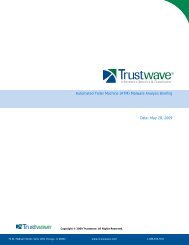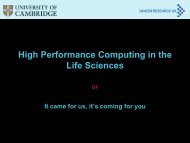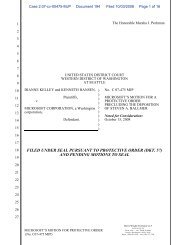The Elmer A. Sperry Award 2006
The Elmer A. Sperry Award 2006
The Elmer A. Sperry Award 2006
Create successful ePaper yourself
Turn your PDF publications into a flip-book with our unique Google optimized e-Paper software.
2<br />
Antony Jameson<br />
Antony Jameson has authored or co-authored 300 scientific papers in a wide range of subject<br />
areas, including both control theory and aerodynamics, and is the principal developer of the<br />
well known series of `FLO’ and ‘SYN’ codes, which have been used throughout the aerospace<br />
industry. He was born in Gillingham, Kent in 1934. Much of his early childhood was spent<br />
in India where his father was stationed as a British army officer. He first attended school at<br />
St. Edwards, Simla. Subsequently he was educated at Mowden School and Winchester<br />
College. He served as a lieutenant in the British Army in 1953-1955, and was sent to<br />
Malaya. On coming out of the army he worked in the compressor design section of Bristol<br />
Aero-Engines in the summer of 1955, before studying engineering at Trinity Hall,<br />
Cambridge University, graduating with first class honors in 1958. Subsequently he stayed on<br />
at Cambridge to obtain a Ph.D. in Magnetohydrodynamics, and he was a Research Fellow<br />
of Trinity Hall from 1960-1963.<br />
On leaving Cambridge he worked as an economist for the Trades Union Congress in 1964-<br />
1965. He then became chief mathematician at Hawker Siddeley Dynamics in Coventry.<br />
In 1966 he joined the Aerodynamics Section of the Grumman Aerospace Corporation in<br />
Bethpage, New York. In this period his work was largely directed toward the application of<br />
automatic control theory to stability augmentation systems. Starting in 1970, he began to<br />
concentrate on the problem of predicting transonic flow. Existing numerical methods were<br />
not equal to the task, and it was clear that new methods would have to be developed. At that<br />
time limitations in computer capabilities also precluded any attempt to calculate the flow<br />
past a complete aircraft, but useful efforts could be made for simpler configurations such as<br />
airfoils and wings.<br />
In 1972 he moved to the Courant Institute of Mathematical Sciences at New York University,<br />
where he continued his work on transonic flow. In 1974 he was appointed professor of<br />
Computer Science at New York University. He joined Princeton University in 1980, and in<br />
1982 he was appointed James S. McDonnell Distinguished University Professor of Aerospace<br />
Engineering. He was director of the University’s program in Applied and Computational<br />
Mathematics from 1986 to 1988. During that decade Antony Jameson devised a variety of<br />
new schemes for solving the Euler and Navier-Stokes equations for inviscid and viscous<br />
compressible flows, and wrote a series of computer programs which have been widely used<br />
throughout the aircraft industry. He and his co-workers were finally able to realize their goal<br />
of calculating the flow past a complete aircraft in 1985, using his new finite element<br />
method. Subsequently, he re-focused his research on the problem of shape optimization for<br />
aerodynamic design.






